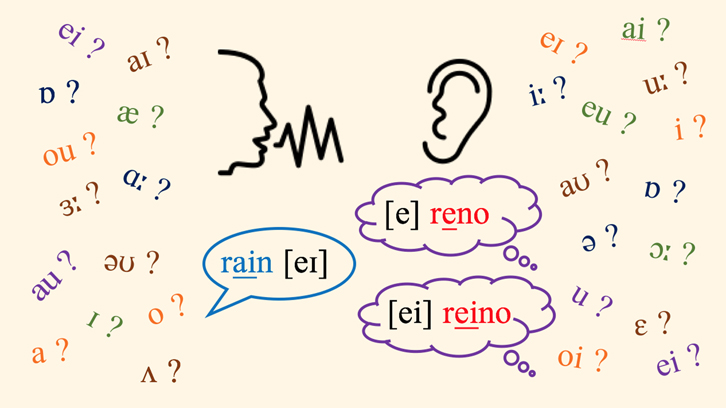Perceptual assimilation between English and Spanish vowels

It is well known that when we learn a new language, particularly after childhood, the new language is affected by our first or native language. This influence from the native language is particularly notable in the pronunciation of the second or foreign language and tends to result in a foreign accent.
Several theories of the acquisition of second language phonology relate the difficulty to achieve accurate pronunciation in a second language with the fact that we perceive the sounds of target language (i.e., the language we are learning) through the phonological categories of the native language. Thus, when a Spanish speaker perceives the vowel in the English word “cat”, he or she assimilates it to the Spanish vowel /a/. Similarly, this speaker may assimilate the vowel in the English word “cut” to the same Spanish vowel category (/a/). This makes it difficult for the Spanish speaker to differentiate between the two English vowels (“cat”-“cut”), which often end up begin pronounced the same way (/kat/). )
On the other hand, second language speech models propose that in order to produce a target language sound accurately it is necessary to distinguish it perceptually from the native sounds. Many studies thus attempt to assess the perceptual distance or similarity between the sounds of the native and the target languages in order to make predictions about learning difficulty. Diphthongs (i.e., sequences like /ai, ei, au, ou/) are often excluded from these studies because they focus on sequences of a single phoneme, which include English monophthongs and diphthongs, and exclude sequences of two vowels like Spanish diphthongs.
The goal of the current study was to assess the perceived similarity between Spanish and British English vowels, and to examine the role that diphthongs play, now also included in the study, in cross-linguistic perception. 29 Spanish speakers took part in two experiments in which participants were presented auditorily with English vowels and they had to identify them in terms of Spanish vowel categories. The experiments differed in whether diphthongs were included or not as possible response alternatives. Results show very clearly that Spanish speakers identify English diphthongs consistently as Spanish diphthongs. For example, the vowel in the English word “rain” is perceived as closest to the diphthong in the Spanish word “reino” than to the vowel in the word “reno”. This shows that previous studies that excluded diphthongs from the analysis (and thus equated the vowel in “rain” with the vowel in “reno”) provide an erroneous and incomplete account.
Globally the results of the study allow us to describe the degree of perceived similarity between each of the Spanish and the English vowels, facilitating the formulation of hypotheses about difficulty of learning.
Department of English and Germanic Philology
Autonomous University of Barcelona
References
Cebrian, J. (2019) Perceptual assimilation of British English vowels to Spanish monophthongs and diphthongs. Journal of the Acoustical Society of America, 145 (1), EL52-EL58. Copyright (2019) Acoustical Society of America. Doi: 10.1121/1.5087645.

